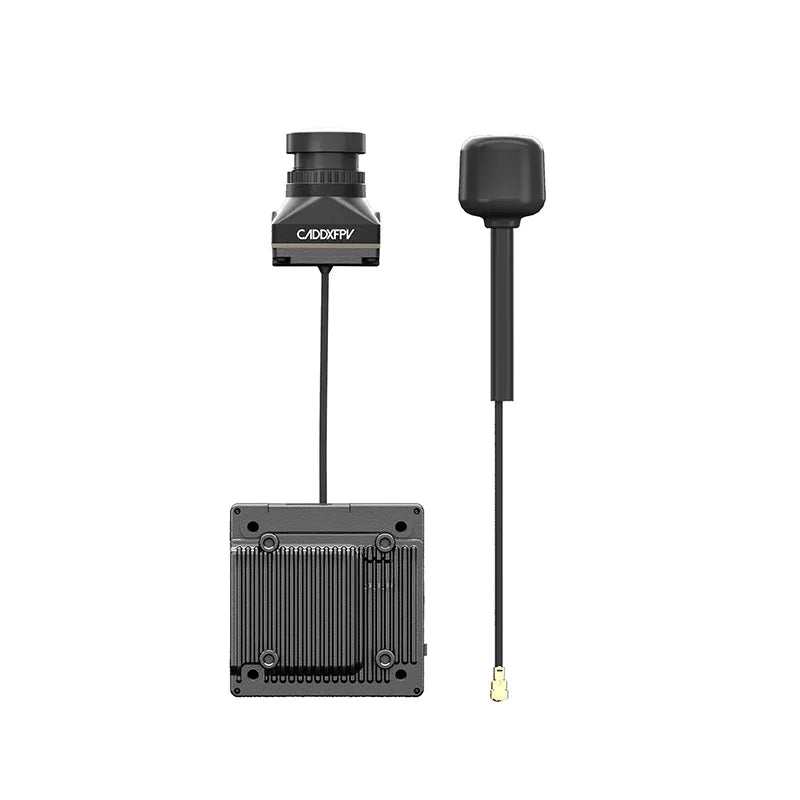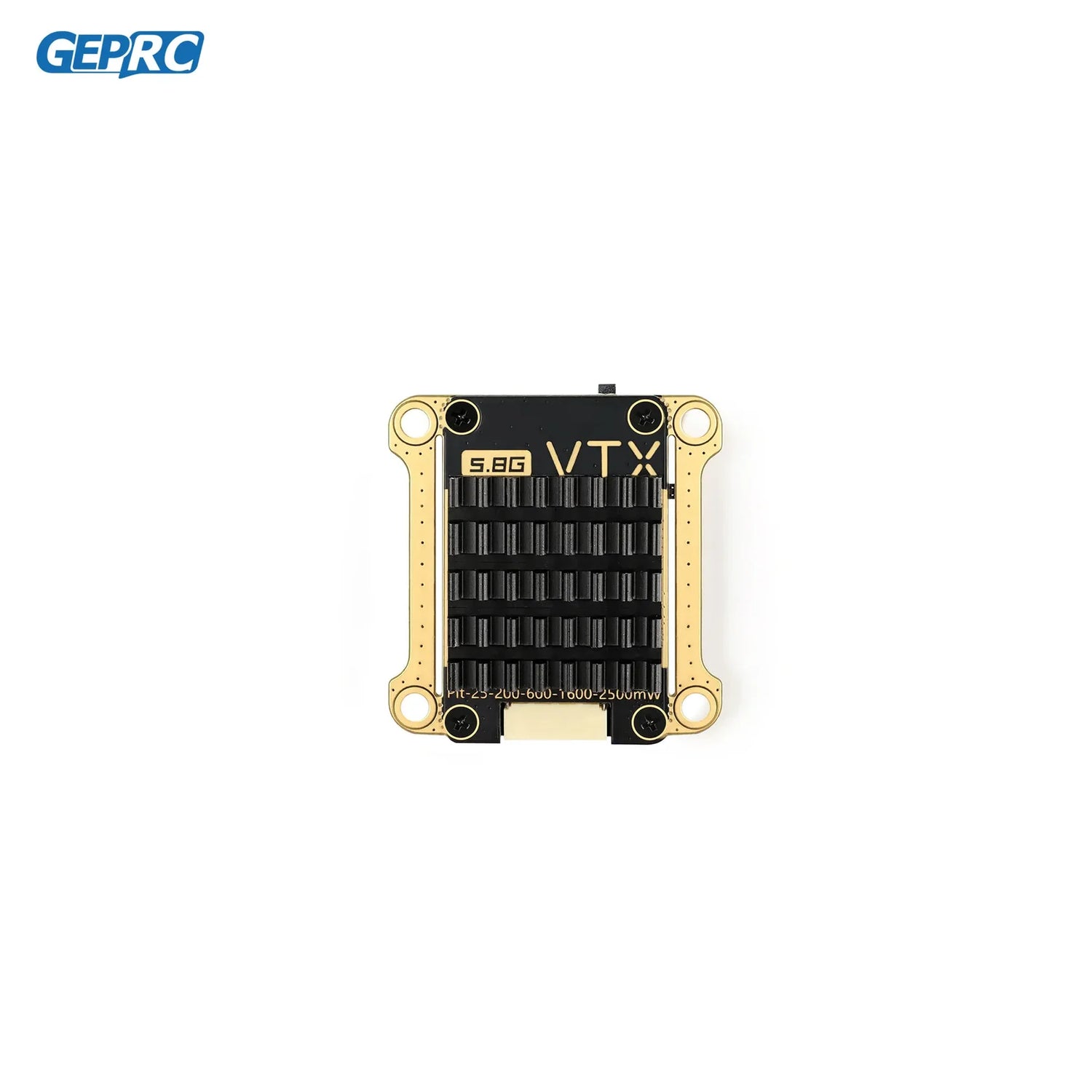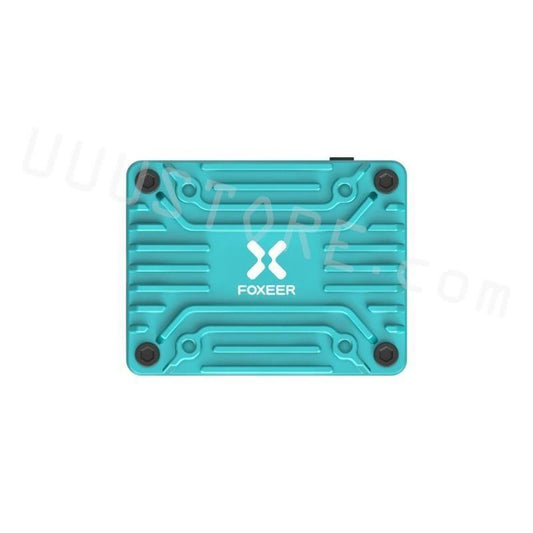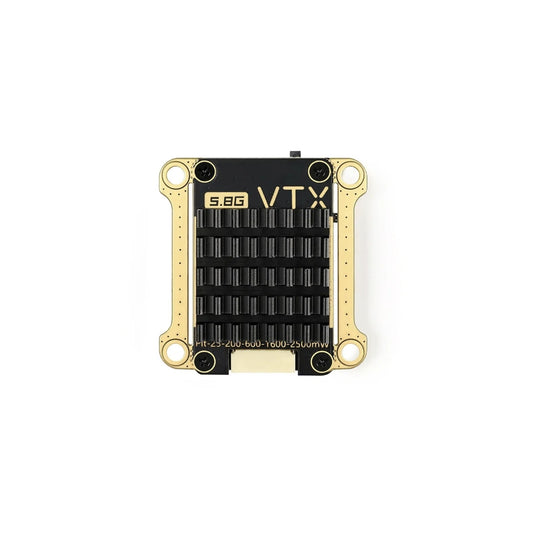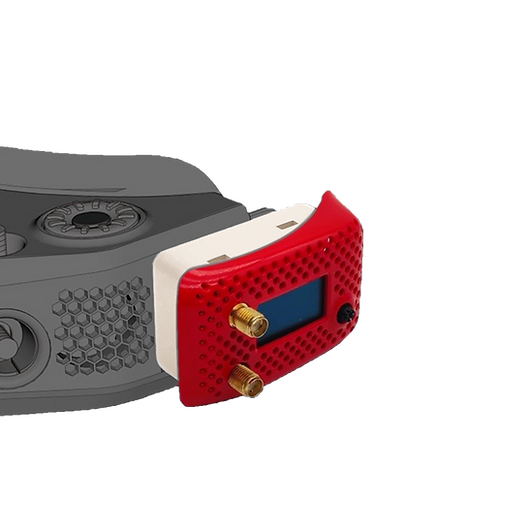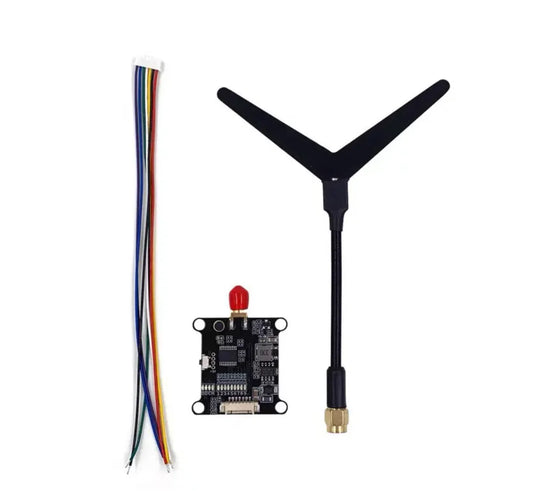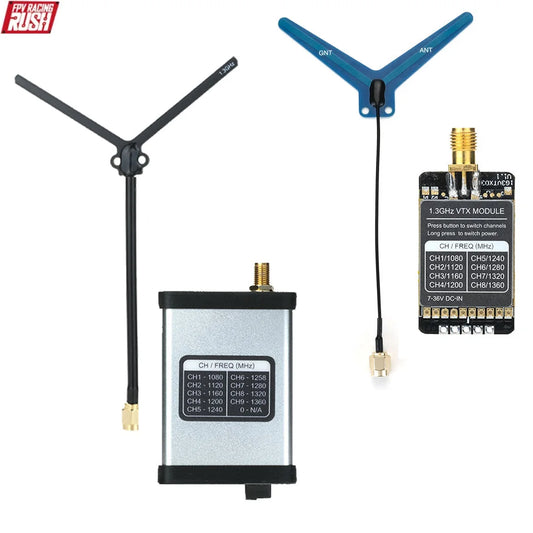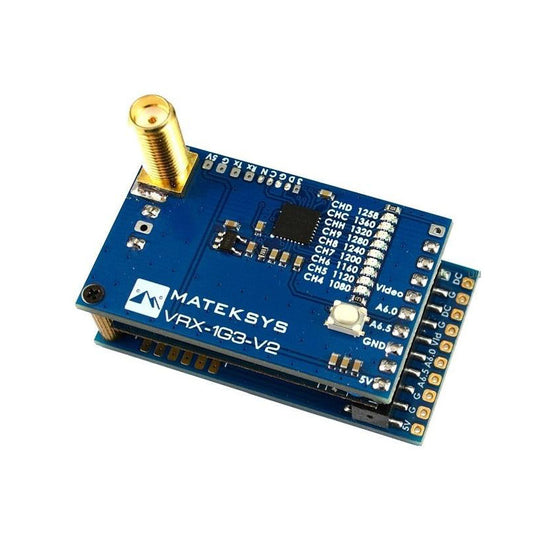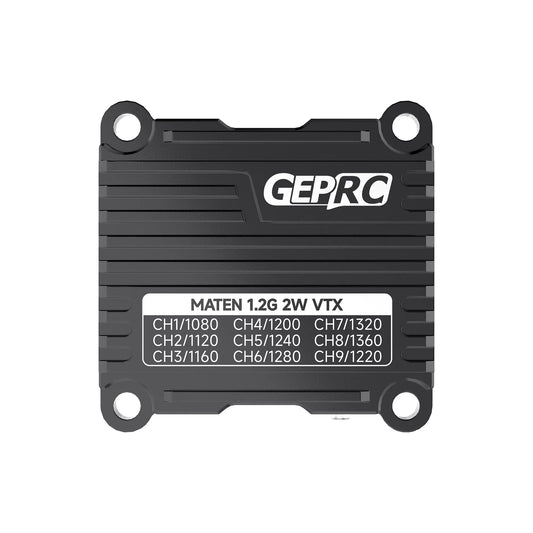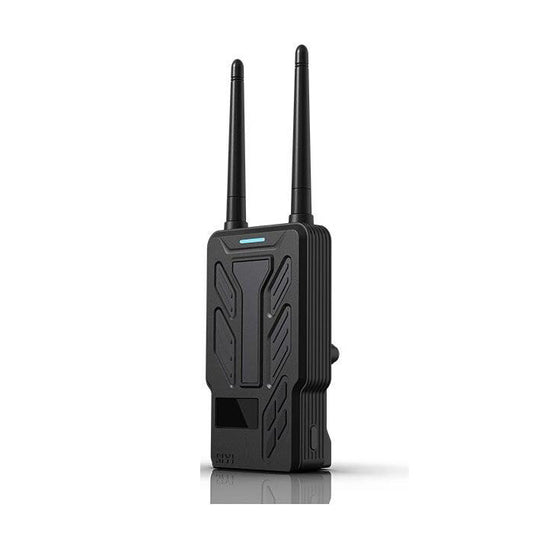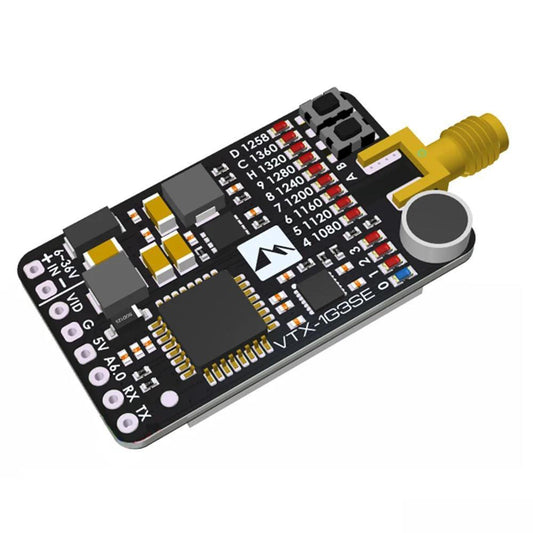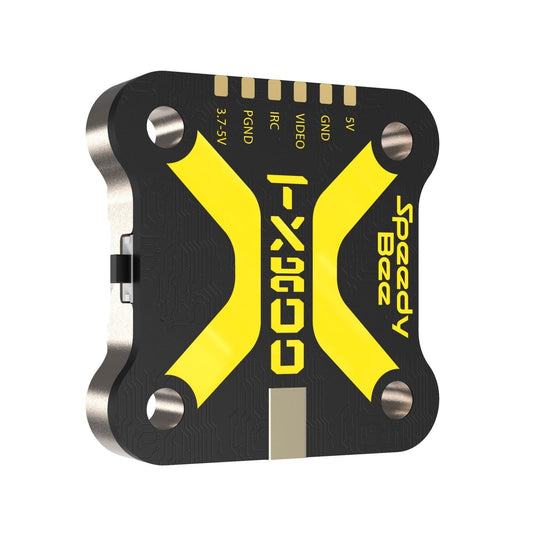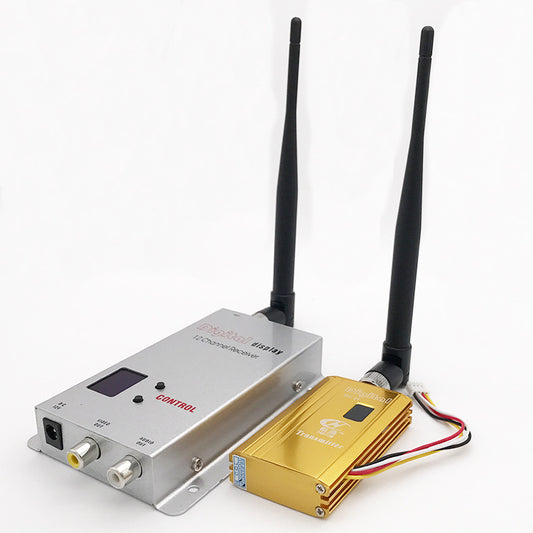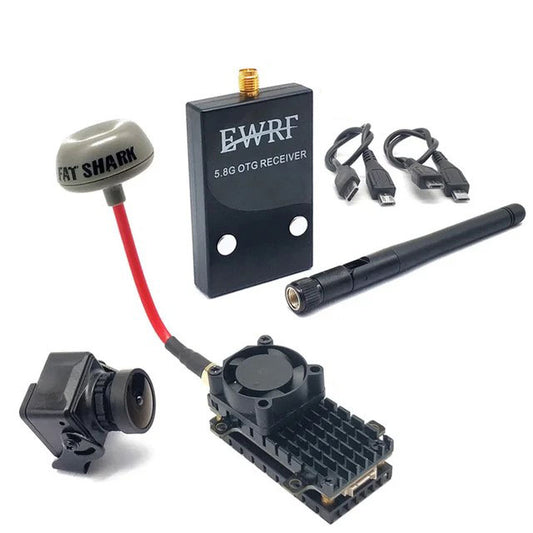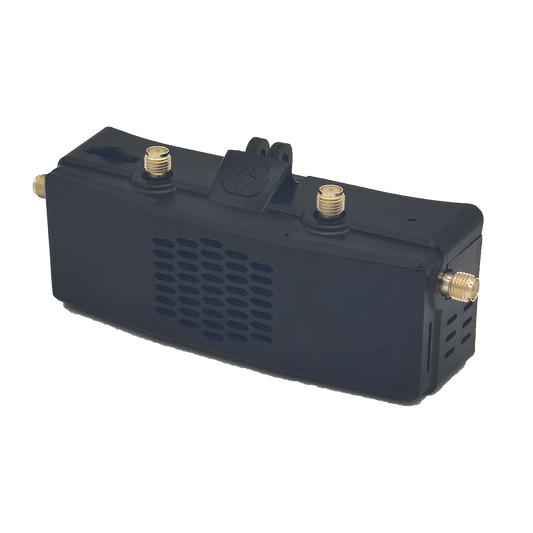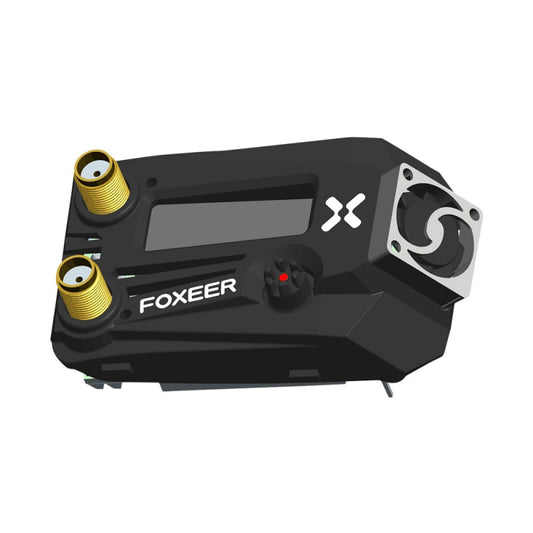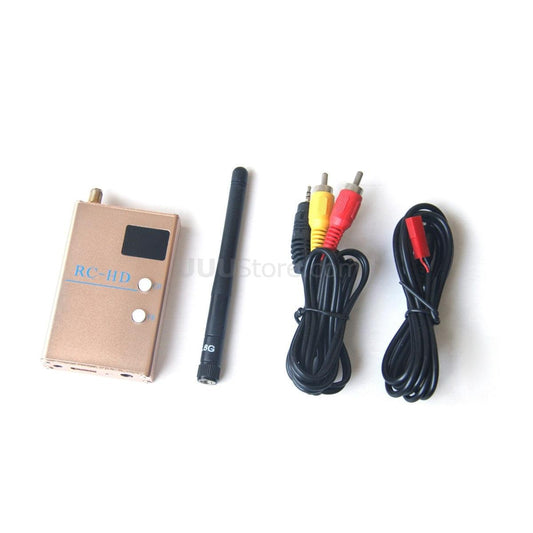By Frequency Band
-

5.8GHz Video Transmitter & Receiver
Upgrade your FPV system with 5.8GHz video transmitter and receiver combos, delivering...
-

2.4GHz Video Transmitter
Explore our 2.4GHz Video Transmitter collection, offering powerful long-range HD video and...
-

800MHz Video Transmitters
800MHz Video Transmitters offer robust long-range performance with superior penetration for UAV...
-

900MHz Video Transmitters
900MHz Video Transmitters are designed for ultra-long-range and interference-resistant transmission, making them...
-

1.2GHz/1.3GHz Video Transmitter & Receiver
Discover our range of 1.2GHz and 1.3GHz FPV video transmitters and receivers,...
-

1.4GHz Video Transmitters
1.4GHz Video Transmitters provide an excellent balance of range, penetration, and bandwidth,...
-

3.3GHz Video Transmitters
3.3GHz Video Transmitters offer a powerful alternative to traditional 5.8GHz systems, delivering...
-

4.9GHz~6GHz Wide Band System
4.9GHz~6GHz Wide Band Systems deliver high-power, long-range video transmission with reduced interference,...
Video Transmitter Brand
-

iFlight VTX
iFlight VTX series delivers high-performance video transmission solutions for FPV racing and...
-

Speedybee VTX
The SpeedyBee VTX collection offers a range of high-quality video transmitters (VTX)...
-

Great Mainlink
Great Mainlink specializes in ultra-long-range UAV communication systems, providing high-performance data and...
-

Foxtech Video Links
Foxtech Video Links collection features professional-grade wireless systems for ultra-long-range video and...
-
Optical Fiber Image Data Module Relay Extender Module for FPV support up to 20km of wired signal transmission
Regular price From $204.79 USDRegular priceUnit price per -
Rushfpv RUSH TANK MAX SOLO VTX - 5.8GHz 2.5W 48CH High Power Video Transmitter with CNC shell for RC FPV Long Range Fixed-wing Drones DIY
Regular price $73.34 USDRegular priceUnit price per -
Foxeer Reaper Extreme Transmitter - 5.8GHz Pit/25mW/200mW/500mW/1.5W/2.5W 2500mW 40CH VTX FPV Transmitter For Long Rang RC Drone Airplane
Regular price $81.93 USDRegular priceUnit price per -
3.3GHz 4W 16CH VTX VRX - Wid Band Video Transmitter Receiver for FPV Drone Goggles
Regular price From $60.75 USDRegular priceUnit price per -
GEPRC RAD VTX - 5.8G 2.5W PitMode 2500mW Output Long Range Transmitter Tramp Support Microphone RC FPV Racing Drone
Regular price $60.85 USDRegular priceUnit price per -
HDZero Goggle Expansion Module V2 (WIFI + Analog)
Regular price $79.00 USDRegular priceUnit price per -
RUSHFPV 1.2G 1.3GHz 4W Long Range VTX with SMA Omni Antenna, IRC Tramp Control, Adjustable Power for FPV Drone
Regular price $85.12 USDRegular priceUnit price per -
Matek VTX-1G3SE / VRX-1G3-V2 1.2G 1.3G 800mw 9CH VRX - Matek System Video Transmission Receiver For RC FPV Drone Aircraft Helicopter Model Parts
Regular price From $22.48 USDRegular priceUnit price per -
AI Target Tracking Module for FPV Drone - Intelligent Tracking Locking Target Movement With 800M Camera + 640 Thermal Camera
Regular price From $225.00 USDRegular priceUnit price per -
Rush 1.3G 1.2G 800MW 8CH VTX - 7-36V FPV Audio Video Transmitter Receiver Module for RC Remote Multi-Rotor DIY Parts
Regular price From $14.76 USDRegular priceUnit price per -
AKK Alpha 5 5W VTX - 5.8GHz 80CH 1w/2w/3w/5w Power Switchable FPV Video Transmitter
Regular price From $120.00 USDRegular priceUnit price per -
MATEKSYS VRX-1G3-V2 Receiver - 1.2Ghz 1.2g 9CH Wide band FPV Video Receiver for RC Drone Goggles Monitor Long range Matek System
Regular price $129.49 USDRegular priceUnit price per -
GEPRC MATEN 1.2G 2W VTX - 1080-1360MHZ/25-2000mW Pit 5V@600mA 14.5g For FPV Drone
Regular price From $8.11 USDRegular priceUnit price per -
3.3G 3W MAX Analog VTX & VRX for 7-13 Inch FPV Video Transmission
Regular price From $96.43 USDRegular priceUnit price per -
AKK Alpha 10 10W VTX - 5.8GHz 80CH 10W 7W 5W 3W 1W Power Switchable FPV Video Transmitter Support Smart Audio
Regular price From $259.00 USDRegular priceUnit price per -
TBS UNIFY PRO32 HV (MMCX) VTX - 5G8 5.8G 8.7g 1000mW 1W Power HV Video Transmitter
Regular price $65.00 USDRegular priceUnit price per -
SIYI HM30 Transmitter - Full HD Digital Video Link Radio System Transmitter Remote Control OLED Touchscreen 1080p 60fps 150ms FPV OSD 30KM
Regular price From $21.10 USDRegular priceUnit price per -
Matek System VTX-1G3SE-9 Transmitter - 1.2G/1.3GHz 9CH INTL 0.1mW/25mW/200mW/800mW FPV Transmitter For racing drone Goggles instead VTX-1G3-9
Regular price $72.48 USDRegular priceUnit price per -
iFlight BLITZ Whoop 5.8G 2.5W VTX - with MMCX Interface 25.5x25.5mm Mounting pattern for FPV Parts
Regular price $73.46 USDRegular priceUnit price per -
SpeedyBee TX800 5.8G VTX - 5V 48CH 200mW / 400mW / 800mW RunCam Maximum Output Long Range FPV Video Transmitter
Regular price From $36.95 USDRegular priceUnit price per -
1.2G 1.3G Analog VRX Receiver for RUSHFPV V2 Recording DVR With Circularly Polarized Antenna
Regular price From $16.00 USDRegular priceUnit price per -
Vrriis WL009 - 250 Meters 2.4G+5.8G 1080P@60HZ Wireless HDMI Extender Transmitter and Receiver
Regular price From $79.00 USDRegular priceUnit price per -
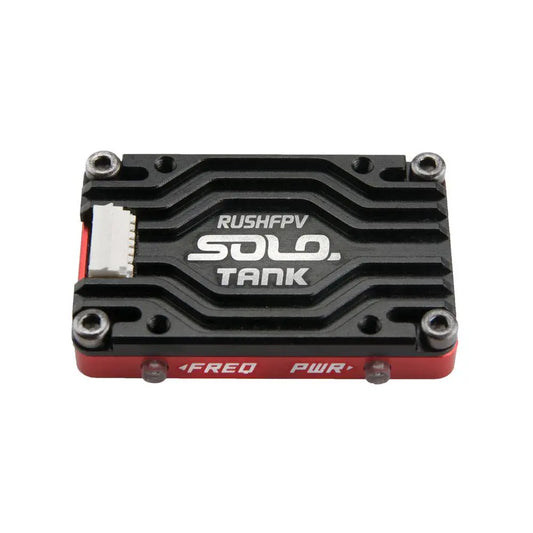
RushFPV Rush Tank SOLO 1.0W 5.8GHz VTX - 5V 1A 48CH PIT/25/400/600/800/1000mW FPV Video Transmitter
Regular price $49.99 USDRegular priceUnit price per -
1.2G 1.5W 8CH VTX / 12CH VRX - 1.2GHZ 1500mW 8Channel Wireless FPV Tranmsitter and 12 Channel Receiver Professional Kit for CCCTV DJI Phantom
Regular price From $53.57 USDRegular priceUnit price per -
5.8Ghz 48CH 2W VTX - Long Range FPV Wireless Viedo Transmitter and EWRF UVC OTG Receiver + CMOS 1200TVL 2.5mm FPV Camera
Regular price $78.40 USDRegular priceUnit price per -
RUSHFPV RUSH TANK SOLO 1.6W 5.8G VTX - 5.8GHZ 48CH PitMode Pitmode 25mW 400mW 800mW 1600mW Adjustable 2-6S Microphone for FPV Long Range Drone
Regular price $69.27 USDRegular priceUnit price per -
HDZero VRX - Digital HD Receiver Module 720P 60FPS 5.8GHZ
Regular price $259.00 USDRegular priceUnit price per -
Foxeer Wildfire 5.8GHz 72CH Dual Receiver - Support OSD Firmware Update for Fatshark FPV Goggles
Regular price $115.00 USDRegular priceUnit price per -
AKK 5823S VTX - 48CH 5.8GHz 200MW FPV Transmitter for FPV Drone
Regular price $29.99 USDRegular priceUnit price per -
AKK Alpha 8 8W VTX - 5.8GHz 80CH 8W 5W 3W 1W Power Switchable FPV Video Transmitter
Regular price From $159.00 USDRegular priceUnit price per -
AKK X2P/X2 5.8Ghz 40CH VTX - 0.01mW/25mW/200mW/500mW/800mW Switchable FPV Video Transmitter Compatible Betaflight OSD FC
Regular price From $18.28 USDRegular priceUnit price per -
TBS UNIFY PRO32 NANO 5G8 V1.1 VTX - 25mW 100mW 400mW 500mW 5.8G Video Transmitter
Regular price $75.00 USDRegular priceUnit price per -
 Sold out
Sold outCADDXFPV Nebula Pro Nano Vista Kit
Regular price $195.00 USDRegular priceUnit price per -
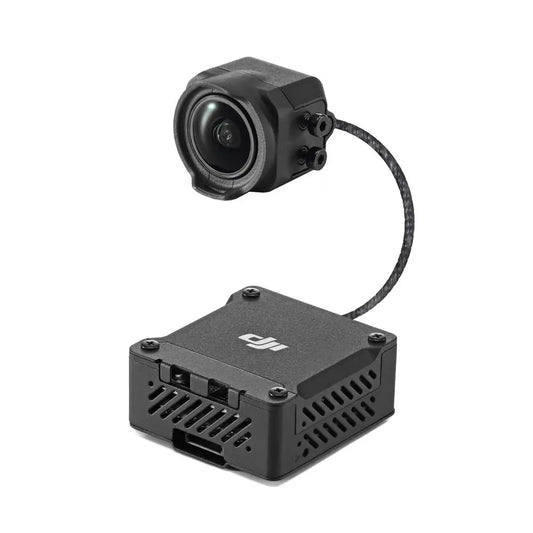 Sold out
Sold outDJI O3 Air Unit
Regular price $269.00 USDRegular priceUnit price per -
Skyzone FPV 5.8G Receiver - 5.8GHz 48 Channels RC-HD Video Receiver 1080P HDMI Output & A/V and Power Cables For FPV Racing Drone
Regular price From $53.14 USDRegular priceUnit price per -
JHEMCU VTX20-600 Transmitter - 5.8G 40CH PitMode 25mW 100mW 200mW 400mW 600mW Adjustable VTX 7-26V 20X20mm for FPV RC Racing Drone
Regular price From $31.41 USDRegular priceUnit price per












